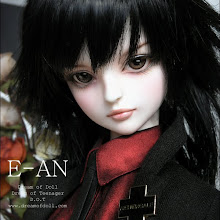Today it's my day off..I'm studying as usually ,suddenly i found this article. It makes me remember my school's time....Solong。。。
The players count aloud to three, or speak the name of the game (e.g. "Rock! Paper! Scissors!" or "Ro! Cham! Beau!"), each time raising one hand in a fist and swinging it down on the count. On the third count (saying "scissors!" or "Beau!"), the players change their hands into one of three gestures, which they then "throw" by extending it towards their opponent. Variations include a version where players use a fourth count — "Shoot!" — before throwing their gesture, or a version where they only shake their hands twice before "throwing". The gestures with the Japanese names are:
- Rock, represented by a clenched fist.
- Scissors, represented by the index and middle fingers extended and separated.
- Paper, represented by an open hand, with the fingers connected (horizontal).
The objective is to select a gesture which defeats that of the opponent. Gestures are resolved as follows:
- Rock blunts or breaks scissors: rock wins.
- Scissors cut paper: scissors win.
- Paper covers or captures rock: paper wins.
If both players choose the same gesture, the game is tied and the players throw again. If the gestures chosen on each throw were truly random, the average number of throws required to decide a winner would be 1.5
Hoje é meu dia de folga .. eu como sempre estou estudando , de repente, eu encontrei este artigo. Me fez lembrar o meu tempo de escola ....Que saudades...
No jogo de Pedra, Papel, Tesoura, os jogadores devem simultaneamente esticar a mão, na qual cada um formou um símbolo (que significa pedra,papel ou tesoura). Então, os jogadores comparam os símbolos para decidir quem ganhou, da seguinte forma:
- Pedra ganha da tesoura (amassando-a ou quebrando-a).
- Tesoura ganha do papel (cortando-o).
- Papel ganha da pedra (embrulhando-a).
今日は休みです。。。相変わらず勉強をしております, 何と無く,これを見つけて私の学校時代を思え出した。懐かしいね
ルール
じゃんけんは2人以上の参加者によって行う。参加者は向き合い(あるいは円になり)、片腕を体の前に出す。参加者全員で呼吸を合わせ、「じゃん、けん、ぽん」の三拍子のかけ声を発し、「ぽん」の発声と同時に出した腕の先に「手」を出す。この「手」の組み合わせによって勝者と敗者を決定する。
勝負が決定しなかった場合を「あいこ」と言う。あいこのときは「あい、こで、しょ」のかけ声を同様に行い、「しょ」で再び「手」を出す。「あいこでしょ」は勝敗が決定するまで繰り返される。
「じゃんぽんけん」と言う場合もあり、その場合は通常ルールでは負ける人が、勝つというルールであり、 通常ルールでは勝つ人は、この場合は負ける。
*all the rights authorized to wikipedia*





Nenhum comentário:
Postar um comentário